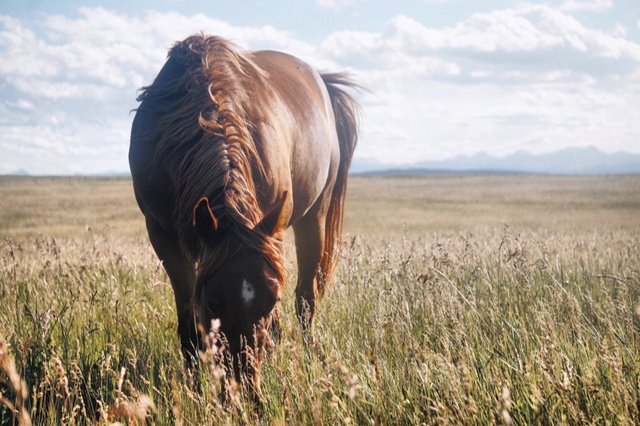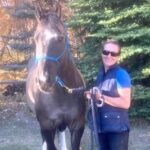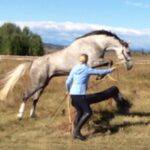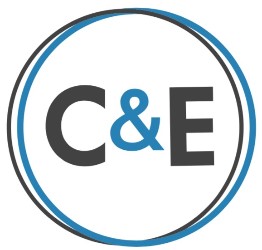
Be the rider your horse needs you to be
Can you feel “IT”? That magical time when connection is established between you and your horse, when the tension disperses completely and is replaced with a softness or fluidity? That moment of clarity, a flash of superpower awareness, when you can ride and observe both your body and your horse’s, embodying all you know? The puzzle pieces only come together occasionally for most equestrians, but “IT” is what we all seek.
“No man can be either well or firmly seated on horseback unless he be master of the balance of his body, quite unconstrained, with full possession of himself, and at his ease on all occasions whatever” said the astute William Cavendish, Duke of Newcastle, way back in 1557.
What he meant is that body awareness is as important to the rider as to our fellow athlete, the horse. Our bodies have the most amazing ability to adapt to our various postures — standing for a long time, sitting hunched over a desk, lifting heavy objects repeatedly. Often, however, we do not realise how much our jobs, our pastimes, even how we drive, affects our posture and thus the way we walk, run, sit and even ride our horses. Anything that is going on in a rider’s body is also reflected in the movement of their horse.
Ideally, our posture should not hinder us, leaving us limited, restricted, or in pain. Because if you’re stiff, your horse will be, too. If your low back is tight, your horse will feel it. Leaning too far to the right will unbalance your horse in some way, too. I’ve learned from experience how important it is to correct any problems in your body OFF the horse, since most of the time they cannot be corrected (or corrected permanently) while riding.
Your own fitness is possibly the greatest factor in comfort, injury-free, efficient riding. The Pilates methodology can help improve any style of riding because of how it focuses on the biomechanics of the rider and improves horse-fitness. I’ve personally felt, and many times witnessed, how a rider’s layers of physical hindrance mirror their horse’s issues. So interesting, hey?
Of course, breaking cycles or patterns of movement is not always easy. As with training your horse, you have to learn to do things differently, and you need to start with groundwork (getting the basics right and perfected from the base level).
A beginner rider wants to work on intermediate horsemanship. An intermediate rider wants to work on advanced horsemanship, but an advanced rider works on the basics!
It’s not just the physical movement but the MINDBODY connection within Pilates work that helps with the very important mental aspect. When doing groundwork with one of my horses or riding, I have often felt overwhelmed, wondering if I’ll ever perfect or even develop that skill, but it usually means my headspace is somewhere other than the round pen, arena or trail. The concentration and discipline learned from Pilates always brings me back to where I need to be.
Indeed, the interlinked principles underlying the Pilates methodology (including concentration, control, precision, centre, flow, breathing) happen to complement or mirror many of those needed in riding (such as awareness, strength, flexibility and balance). But even if we apply the principles in Pilates to train ourselves and our horses, adaptations are of course needed to customize it to the variables of each body and horse.
As equestrians, we often work the horse with groundwork first, resulting in the horse mastering its body, movement, and approach long before we get into the saddle. Pilates prescribes that same mastery and inner control for the rider. If you think something’s hard to do on the mat, wait till you get on a powerful moving horse! Your knowledge of movement also will allow you to interpret the feedback you get from the horse.
Think like a trainer for a moment: Trainers who spend time doing groundwork have a sense of their horse’s balance and correct movement. If we think like a trainer and approach our work with our horse or our body in the same way, should we not be able to analyze and explain what we are doing and why we are doing it?
A more balanced horse stays healthier, sound in body and more relaxed mentally and physically. And the same can be said for us. If we do our groundwork in Pilates, our human body can expect a similar result. I can’t overstress this point: the body that you have off the horse is the exactly the same one you have while riding. So If you suffer from bad posture, low back pain, crookedness, etc., it will be there in some way while you ride.
Some specific ways Pilates can help riders
Most importantly, being Pilates-fit can help you develop consistency in your riding technique. Other major areas it can help are in:
Posture, mobility and balance
These are all interrelated and complementary in both Pilates and riding. For instance, on a horse, a rider’s body must neither sit idle nor overwork but instead be active with intent. Any time you get behind or in front of the movement, you are out of time with your horse and not working together in balance and rhythm.
Communication
A rider’s athleticism, balance, mobility (and thus fluidity) are all constantly communicated to the horse. Any tension or supposed “misbehaviour” from your horse can be symptoms of miscommunication. If you are not in control and mindful of your body, your movement, or even your energy, how can you clearly communicate what you are asking of the horse?
Control and precision
Key in both Pilates and horsemanship, and necessary to move with grace. Subtle cueing from the rider’s body such as posture on a horse can dictate the intention or pre-emption of a movement. (For example, sitting slight back weighted on the sitz bones asks the horse to back up.) IF you are able to set your posture, you can message and communicate what you want from the horse.
Tension or strain in your body needs to be dispersed and replaced with a softness. For many reasons we can hold an immense amount of tension and stiffness that can translate directly through to the horse via the reins. What we instead need to try and find is a suppleness and fluidity to communicate iby first addressing our holding patterns that create the tensions. If we don’t address those, the issues will just perpetuate the cycle.
Similarly, hanging on to the horse’s mouth is a result of not being correctly balanced. Holding on with the reins for balance rather than engaging core muscles for stability will tighten all muscles especially those in the shoulder, arm and hand. The rider will tend to overuse those muscles, leading to soreness and fatigue. It will also confuse the horse since communication through the reins will be tense.
If your balance is too far off in one direction (e.g., too far forward) it will cause strain or tension not only in your body but in your horse. Not only can you get “clothespegged” off, when you use your legs for gripping, rather than engaging core muscles for stability and balance, all your muscles can tense. This sends confusing messages to the horse and makes the horse tenser. If the horse tenses, the rider might become stiffer, more susceptible to bouncing around in the saddle, and more vulnerable to injury.
If you are going down a really steep bank, you have to lean back to keep balance and you always need to be balanced as a horse changes its position. No matter how the horse moves underneath you, you need to find balance.
****
“Don’t rush something you want to last forever”
To be totally upfront, learning to retrain your body through the Pilates method takes focus, and may initially feel emotionally and physically counterintuitive. Pilates is NOT a “no pain no gain” type of workout. You might at first think you’d prefer more repeats and heavier weight resistance instead of being cued for precise, intricate slow movements to train under-used muscle connections. Effortless movement might feel underwhelming at first, but the power generated can be truly amazing when mind and body work together. It’s truly intelligent exercise! We often use more effort than a move actually requires. As a result, not only do muscles work against each other, creating resistance in our body and dulling our sensitivities. Worth thinking about when we expect our equine companion to not “dull out”?
Pilates will enable you to be aware of your movement and body position, build strength through correct movement, replicate correct movements, and generally make all movement easier. Through this deep body awareness, you can access and control specific muscles to tighten, tone, and strengthen, without gripping or tension, and take your riding to a new level. And once you find that level of internal connectivity, it’s a feeling you will want to experience again and again. And if you lose it, you will realize it and will also know what to do to recover it.
Like in all other sports, equestrians develop patterns in their bodies over time to compensate for injuries, pain, weakness or tension, poor body awareness or training, postural problems and stress of any kind (mental, physical, structural or emotional). I truly believe addressing the many layers can unleash energy and add flow to our riding. And this “feel” is such a personal experience so how it is accessed differs widely.
Hopefully the above brief introduction shows what developing your physical and mental edge with the Pilates method can offer to equestrians and their horses. Like with anything worth pursuing, it does require commitment and a willingness to be open, to show up and to do the work.
Because we are all a product of our past to some degree, our tendency is to look through one lens, to pull from what we already know. Too often this can define how we think and what we do. The potential to learn a new way — to notice more in our own bodies as in our horses’ — can help create that elusive connection we all seek. To find acceptance of what is, rather than frustration about what is not happening, can offer joy in the moment. Reaching goals together = a winning combination.
Because of the undeniable synergy of my work with equestrian bodies, and that of equestrian trainer Tracey Skinner, in 2021 we plan to collaborate and offer an integrated clinics and toolkit for both horse and rider. Together we will unlock body parts, address tension and dysfunctional patterning, and give you practical skill sets to take home. We want to demonstrate the benefit of making your work with your body and your horse an art form, rather than a chore. To facilitate the building of a bond of trust and a depth of understanding with your body and your horse. The end goal? To give the best of yourself every time you work with your horse.

Amy Krazizky
Pilates Teacher
***
Tracey and I have been training together for a while now; I strongly believe that we were meant to cross paths. She has helped me translate what I do with human clients through Pilates body work, into my own training with my horses and their body work. The result has been a positive development for me — a new specialization with equestrians. Please read on to hear from Equestrian Trainer Tracey Skinner ……
***
Tracey’s view – Groundwork’s synergy with Pilates
I began working with Amy Krazizky a year ago. After a significant injury, I was looking to get my body back functioning better than ever. My profession is training horses and I needed my body to feel good and be strong. From our very first session in the Pilates studio, I was blown away with the incredible synergy between what we both do! Everything Amy was teaching me about my own body awareness, I could relate to my work with horses and their humans.
Once I became more body-aware on a whole new level through Pilates, the way I looked at my horses changed. Not only am I now more “in” my own body, and communicating with greater clarity to my horses, I’m watching them through a new lens. I’m interested, to a greater detail, how they carry themselves. I’m seeing the synergy of connectedness in their bodies as well as mine. Shoulders, ribs, hips: these parts have to move freely and effortlessly — independently and together– for the whole body to function optimally.
Body awareness is only one of the key principles shared by Pilates and the work we do with horses. I already knew how much we learn about our horses’ balances and imbalances by observing them on the ground, and how it gives us a greater alertness to what happens when we ride.
Awareness of self (physically, mentally and emotionally) + Awareness of the horse (physically, mentally and emotionally) = Togetherness/harmony.
Horses read us, they read our body language on the ground and they feel us when we are riding. If we want to communicate clearly and consistently for our horses’ sake, we need to understand how we are holding ourselves, how we are breathing, even how our thoughts can affect how our horses feel about us, and how they respond to us.
Practicing self-awareness is worth it, I’ve discovered: Slow everything down, relax, don’t force and allow. Be observant, have a quiet mind. Feel and be conscious of your body positioning. Your horse will thank you!
The majority of horse/human challenges arise through miscommunication. What we think we are asking our horses to do, and what our body language is telling the horse, often conflict!Examples: Asking a horse to go forward at the same time as holding a backward contact* that is not allowing for forward Sending a horse in one direction in the round pen at the same time a rider’s positioning is blocking them from going in that direction and they can spin off the other way. Frustrating? Yes! Preventable? Absolutely! Both horse and human will be at greater ease, find more confidence in each other, if we can observe the whole picture and see what is really happening. Most horses only do what they think they are being asked to do. More times than not, it is the human who is muddled in their communication.
According to the Encyclopedia Britannica; “Good horsemanship requires that a rider control the animal’s direction, gait, and speed with maximum effectiveness and minimum efforts.”
For a ride to jive with minimum effort, there needs to be harmony between horse and rider. And the best place to start building connection with your horse is on the ground.
Horsemanship is a lifelong journey, with challenges and successes. What amazes me always, is the magic moments I get a taste of with my own horses, my training horses, and between my students and their horses.
Groundwork sets the foundation of respect, understanding, communication and trust.
It is on the ground that I introduce the concepts of forward, bend, balance, relaxation, flexions, lateral work, transitions, self-carriage. I start horses over their first jumps on the ground, I introduce them to obstacles, manmade and natural. It builds such confidence!
I’ll be totally honest — as an experienced and skilled rider and trainer, I can solve many issues on the ground. However, there are some training issues that come up that I don’t want to ride through. I have no problem with stepping off, if I feel a horse is getting dangerous and deal with it on the ground. I have the tools to solve the issue and keep myself safe. Nor will I ever force a student to stay on and ride through something if they are scared. It does neither the student nor horse any good. Once a rider is in fear mode, their timing will be off, and their reactions will make the situation worse, more times than not. If they are given the tools to get off with a plan of action, they will feel safer and empowered to handle that situation.
Through the process of creating a strong functional foundation with your horse, you can gain confidence and rhythmic flow to your relationship. Ground-working your horse benefits progression. Skip this vital component and you’ll be fixing bigger issues down the line. The basics, when fine-tuned (broken down to be precise and well executed) underlayer the advanced and more complex moves you will eventually do.
Groundwork sets up successful and very enjoyable rides. When I iron out the creases on the ground my work “under saddle” is smooth and positive. I can have so much fun playing with my horses on the ground. Watching them, I get so excited when their expression and self-carriage shows a freedom and forwardness that only a healthy happy horse offers.
Synergy between GW and Pilates
The deeper I delve along my personal Pilates journey, the more aware I’vebecome of the incredible synergy with my horse life. It’s in the details. Going back to the basics is the path of advancement. Breaking things down to build them up again with greater precision and better knowledge of how parts work individually and together.
In The Tool Kit, Amy’s pre-Pilates book, she talks about the layering effect of training, and, how like an onion, each layer comes off to reveal a deeper layer. As we peel off layers of dysfunctional patterning, however, we can also layer on better practice techniques. Just like doing the groundwork with a horse.
I’m amazed at how Amy has made me aware of my body on a whole new level by breaking downthe details to such isolated and specific movements! Just like in groundwork. Every exercise can be broken down so many times, right down to the thought.
The more we peel back the layers, the more it becomes apparent that it is not just about the physical state. Our mind and emotions play key roles in how our bodies are working. Mental and emotional fitness are also key when we work with our horses. The amazing thing about working with horses is that not only do we need to be self-aware on a physical, mental and emotional level, we also need to be aware of the same in our horses. They, too, are emotional,thinking beings, and like us, they store emotional trauma in their physical bodies.
When we can get through all these levels of “stuckness” — a beautiful freedom of movement occurs. For both ourselves and our horses.
We can look at groundwork as (pre)Pilates for the horse. We can communicate to individual body parts to help the horse find balance and strength in movement. It also gives us the space to check in mentally and emotionally with our horses.
With competent skills in groundwork, a rider and horse can work very efficiently, too.Because of the specific breakdown and structured progress I use as a trainer, 10-20 minutes can have more of a positive effect on your horse’s progression than a lengthier session. Sometimes when the message isn’t delivered clearly to the horse, we might slog it out but instead build more stress, tension and frustration, making our sessions with our horse counter-productive.
Like in the Pilates methodology, everything that I teach as a trainer is explained in simple steps, easy to digest for the owner and horse. Through our clinics we will explain the why of each move, how it leads to a more progressive/advanced move, where it’s required on a daily basis, etc. Mastered control is needed no matter what your focus, from the dressage ring to the trail, from trailer-loading to moving your horse in the tack-up stall.
The practice described in the pre-Pilates book The Tool Kit* has been essential to my own self-awareness, and continuing with private Pilates sessions has only developed it and brought inner strength. Since Amy is an avid equestrian herself with a clientele of equestrians, we consistently end up sharing ideas and “aha!” moments, showing the synergy of our work. Thus came the inspiration to develop a specific Tool Kit for equestrians.
The Equestrian Tool Kit provides the tools to help build a solid foundation in your training. It develops the ability to analyze and diagnose what the challenge is, where it is coming from and most importantly, how to overcome it. It will help you find the connection with your physical, mental and emotional self, bringing you to a place where you can communicate clearly. You can start observing your horse in a new way, fully present and help them be more in tune with you and their own bodies. Help your horse get more confident, agile, healthier and happier. When you start this journey down the road of trust and connection, like me, you’ll be amazed with the magic you find along the way!

Tracey Skinner
Equestrian Trainer
